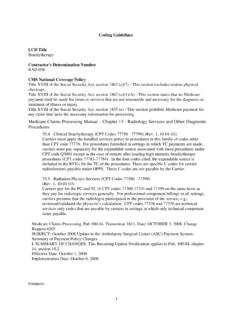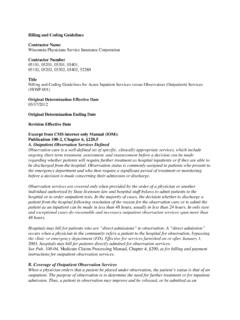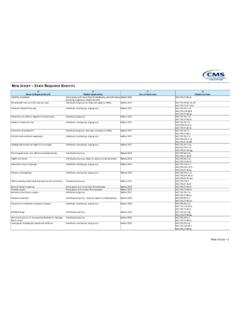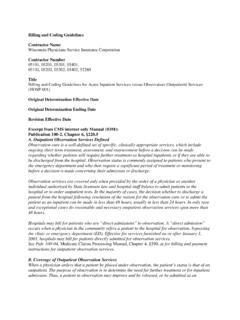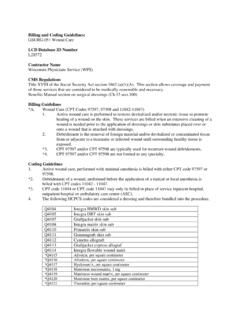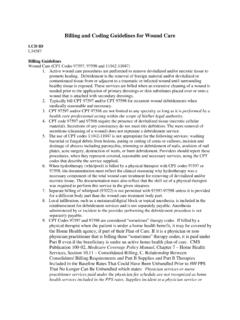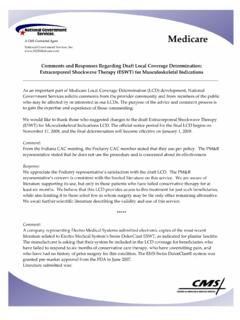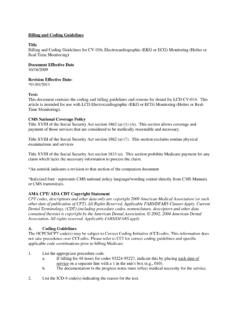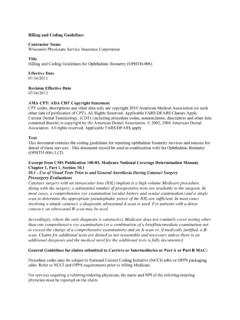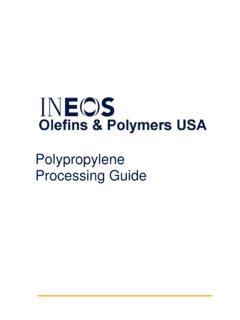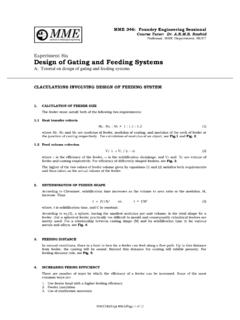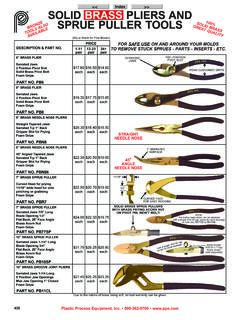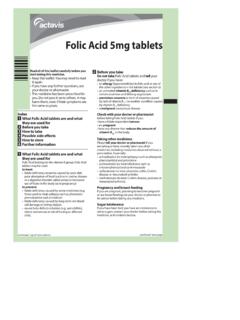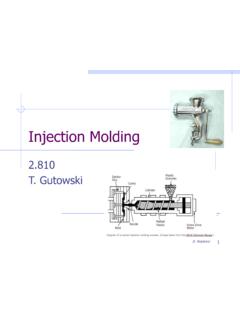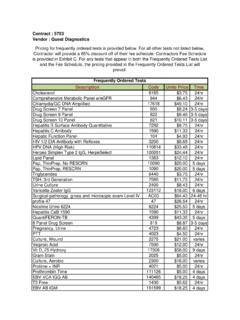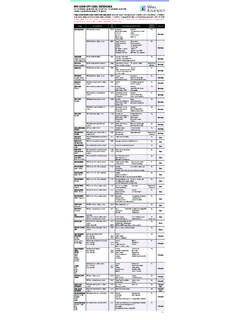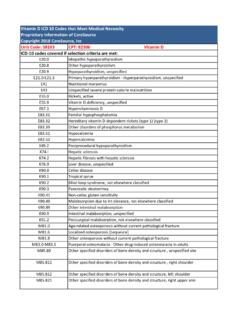Transcription of Billing/Coding Guidelines Article Title: Routine Foot Care ...
1 1 Billing/Coding Guidelines Article Title: Routine Foot Care And Debridement Of Nails Contractor's Determination Number FT-001 Article Effective Date 01/01/2010 Coverage Topic Foot care CMS National Coverage Policy Italicized Language is from Centers for Medicare and Medicaid Services (CMS). National Coverage Determinations (NCDs (42 CFR [b] and 42 CFR 426 [Subpart D Title XVIII of the Social Security Act Section 1862 (a) (1) (A) Section 1862 (a) (13)(C) Code of Federal Regulations (CFR) Part , subpart A CMS Publications: CMS Publication 100-2, Medicare Benefit Policy Manual, Chapter 15: 290 CMS Publication 100-3, Medicare National Coverage Determination Manual, Part 1: CMS Publication 100-9, Medicare Contractor Beneficiary and Provider Communications Manual, Chapter 5 Coding Information 1. Report the appropriate procedure code and modifiers for the service(s) performed.))]
2 A. When reporting foot/nail care report the applicable Q modifier. b. These services should be reported with quantity of one in the quantity/units field. 2. Report the ICD-9 code for which the service(s) is performed in the first position in the diagnosis field of the CMS 1500 claim form or electronic equivalent; report the systemic condition(s) in the remaining positions. Where the systemic condition is marked with an (*) (see below) and the services were rendered by a podiatrist, include the 8-digit (MM/DD/CCYY) date the patient was last seen and the NPI of his/her attending (MD/DO) physician who diagnosed the complicating condition in item 19 of the CMS 1500 claim form or electronic equivalent field, diabetes mellitus* Chronic Thrombophlebitis* Peripheral neuropathies involving the feet - Associated with malnutrition and vitamin deficiency* Malnutrition (general, pellagra) Alcoholism Malabsorption (celiac disease, tropical sprue) Pernicious anemia Associated with carcinoma* Associated with diabetes mellitus* Associated with drugs and toxins* Associated with multiple sclerosis* Associated with uremia (chronic renal disease)* 2 Hereditary sensory radicular neuropathy Angiokeratoma corporis diffusum (fabry's)
3 Amyloid neuropathy Long term oral anticoagulant therapy ( Coumadin, Dicoumaral, etc.)* Services ordinarily considered Routine might also be covered if they are performed as a necessary and integral part of otherwise covered services, such as diagnosis and treatment of diabetic ulcers, wounds, and infections. 3. When billing for services, requested by the beneficiary for denial, that are statutorily excluded by Medicare ( Routine foot care), report an ICD-9 code that best describes the patients condition and the GY modifier (items or services statutorily excluded or does not meet the definition of any Medicare benefit) 4. When billing for services, requested by the beneficiary for denial, that would be considered not reasonable and necessary, report an ICD-9 code that best describes the patients condition and the GA modifier if an ABN signed by the beneficiary is on file or the GZ modifier (items or services expected to be denied as not reasonable) when there is no ABN for the service on file.
4 5. For patients on long term oral anticoagulant therapy, report the ICD-9 related to the performed service in the first position, the drug ICD-9 ( ) in the second position and the condition being treated with the anticoagulant in the third position of item 21 of the CMS 1500 claim form or electronic equivalent. 6. It is inappropriate and incorrect to report an E&M code when Routine foot care or a nail trimming/debridement service is the service actually performed. 7. The following class finding modifiers should usually be used with G0127, 11055, 11056, 11057, 11719, and when appropriate, CPT codes 11720, 11721. A Class A finding (Modifier Q7) Two of the Class B findings (Modifier Q8); or One Class B and two Class C findings (Modifier Q9). 8. Benefits for Routine foot care are also available for patients with peripheral neuropathy involving the feet, but without the vascular impairment outlined in Class B findings.
5 The neuropathy should be of such severity that care by a non-professional person would put the patient at risk. If the patient has evidence of neuropathy but no vascular impairment, the use of class findings modifiers is not necessary. This condition would be represented by the ICD-9 CM codes in list three of ICD-9 Codes that Support Medical Necessity listed in the LCD. 9. A diagnosis of onychomycosis can allow 11720 or 11721 if it has either a Q modifier (but does not need a MD or DO last seen) or if it has one of the 6 ICD-9 codes listed in the special section for onychomycosis, difficulty with walking ( , , , , , ). 3 Routine Foot Care Except as provided above, Routine foot care is excluded from coverage. Services that normally are considered Routine and not covered by Medicare include the following: The cutting or removal of corns and calluses; The trimming, cutting, clipping, or debriding of nails; and Other hygienic and preventive maintenance care, such as cleaning and soaking the feet, the use of skin creams to maintain skin tone of either ambulatory or bedfast patients, and any other service performed in the absence of localized illness, injury, or symptoms involving the foot.
6 Exceptions To Routine Foot Care Exclusion 1 - Necessary And Integral Part Of Otherwise Covered Services In certain circumstances, services ordinarily considered to be Routine may be covered if they are performed as a necessary and integral part of otherwise covered services, such as diagnosis and treatment of ulcers, wounds, or infections. 2 - Presence Of Systemic Condition The presence of a systemic condition such as metabolic, neurologic, or peripheral vascular disease may require scrupulous foot care by a professional that in the absence of such condition(s) would be considered Routine (and, therefore, excluded from coverage). Accordingly, foot care that would otherwise be considered Routine may be covered when systemic condition(s) result in severe circulatory embarrassment or areas of diminished sensation in the individual s legs or feet. In these instances, certain foot care procedures that otherwise are considered Routine ( , cutting or removing corns and calluses, or trimming, cutting, clipping, or debriding nails) may pose a hazard when performed by a nonprofessional person on patients with such systemic conditions.
7 Coding Information Date Last Seen by Attending Physician (for those ICD-9 CM codes which fall under the active care requirement): CPT codes 11055, 11056, 11057, 11719, and G0127 or 11720, 11721. The approximate date when the beneficiary was last seen by the , , who diagnosed the complicating condition (attending physician) must be reported in an 8-digit (MM/DD/YYYY) format in Item 19 of the CMS-1500 claim form or the electronic equivalent or if the patient sees their primary care physician no later than 30 days after the services were furnished. For claims submitted to the fiscal intermediary: Hospital Inpatient Claims: The hospital should report the patient's principal diagnosis in Form Locator (FL) 67 of the UB-04. The principal diagnosis is the condition established after study to be chiefly responsible for this admission. The hospital enters ICD-9-CM codes for up to eight additional conditions in FLs 67A-67Q if they co-existed at the time of admission or developed subsequently, and which had an effect upon the treatment or the length of stay.
8 It may not duplicate the principal diagnosis listed in FL 67. 4 For inpatient hospital claims, the admitting diagnosis is required and should be recorded in FL 69. (See CMS Publication 100-04, Medicare Claims Processing Manual, Chapter 25, Section 75 for additional instructions.) Hospital Outpatient Claims: The hospital should report the full ICD-9-CM code for the diagnosis shown to be chiefly responsible for the outpatient services in FL 67. If no definitive diagnosis is made during the outpatient evaluation, the patient s symptom is reported. If the patient arrives without a referring diagnosis, symptom or complaint, the provider should report an ICD-9-CM code for Persons Without Reported Diagnosis Encountered During Examination and Investigation of Individuals and Populations (V70-V82). The hospital enters the full ICD-9-CM codes in FLs 67A-67Q for up to eight other diagnoses that co-existed in addition to the diagnosis reported in FL 67.
9 RHC/FQHC encounters billed on TOBs 071x or 073x do not require HCPCS coding. Home health claims billed on 12X or 22X TOBs do not require HCPCS coding. Modifiers: Level two modifiers (indicating digit or limb) are entered in Field Locator 44 UB-04 claim form or the electronic equivalent. Modifiers identifying indication for treatment (Q7, Q8, or Q9) are entered in Field Locator 44 UB-04 claim form or the electronic equivalent when applicable to validate medical necessity. Modifiers: FA Left hand, thumb Ta Left foot, great toe F1 Left hand, second digit T1 Left foot, second digit F2 Left hand, third digit T2 Left foot, third digit F3 Left hand, forth digit T3 Left foot, forth digit F4 Left hand, fifth digit T4 Left foot, fifth digit F5 Right hand, thumb T5 Right foot, great toe F6 Right hand, second digit T6 Right foot, second digit F7 Right hand, third digit T7 Right foot, third digit F8 Right hand, forth digit T8 Right foot, forth digit F9 Right hand, fifth digit T9 Right foot, fifth digit Note: Finger modifiers apply to MI/MN only Notes Italicized font represents CMS national policy language/wording copied directly from CMS Manuals or CMS Transmittals.
10 Carriers are prohibited from changing national policy language/wording. Providers, through their associations/societies, should contact CMS to request changes to national policy through the Medicare Coverage Policy Process at *( ). An asterisk (*) indicates a revision to that section of the policy. Original Effective Date 08/16/2009 Publication Date 12/01/2009 5 Revision Date/Number/Explanation *01/01/2010, Removed statement, per MBPM, Chapter 15, 290 - or qualified non-physician practitioner , *12/01/2009, Removed language from LCD that was not directly related to Routine foot care, added language regarding coverage of peripheral neuropathy and billing with a diagnosis of onychomycosis; 10/15/2009, corrected typo G0045-G0047 corrected to G0245-G0247; 07/01/2009, one, this LCS merges all other LCDs regarding Food Care including FT-001, FT-501 and FT.
